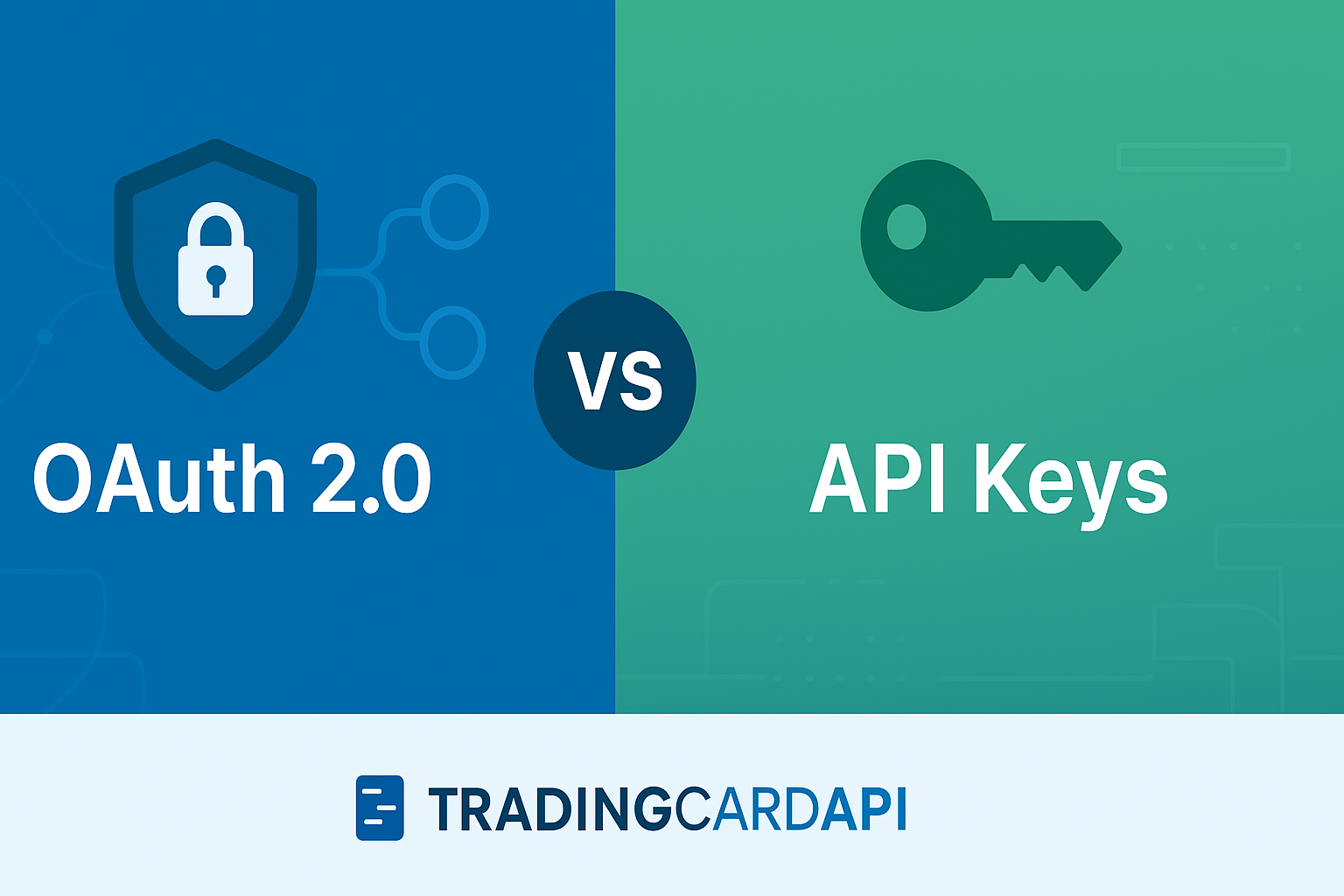OAuth 2.0 vs API Keys: Why We Started with OAuth (And Why We're Adding API Keys Too)

When I first built the Trading Card API, I chose OAuth 2.0 with Laravel Passport. It gave us enterprise-grade security and flexibility from day one.
After using the API on my own projects, I've realized that while OAuth is perfect for some use cases, many developers would benefit from the simplicity of API keys for others. Here's why we're adding both options.
The Reality of OAuth 2.0 vs API Keys
OAuth 2.0
- ✅ Enterprise-ready, secure token management
- ✅ Built-in token expiration and refresh
- ✅ Perfect for user-facing applications
- ❌ More complex setup for simple integrations
- ❌ Overkill for basic server-to-server calls
API Keys
- ✅ Dead simple - just add to headers
- ✅ Perfect for server-side integrations
- ✅ Faster time-to-first-API-call
- ❌ Need to handle security and rotation manually
- ❌ Less suitable for applications with end users
The Right Tool for the Job
OAuth 2.0 was the right foundation - it handles complex authentication flows and gives us room to grow. But after building my own integrations, I've seen that many use cases are straightforward server-to-server calls where API keys just make more sense.
Think about it: if you're building a collection management system that syncs card data every night, or a pricing tool that pulls market data for analysis, you don't need the complexity of OAuth flows. You just need authenticated access to the data.
Real-World Examples
Perfect for OAuth 2.0:
- A mobile app where users authenticate to track their personal collections
- A web platform where multiple users manage shared inventories
- Any application where end users need to authorize access to their data
Perfect for API Keys:
- Server-side scripts that sync card data
- Collection management systems for card shops
- Data analysis tools and market research platforms
- Simple integrations that just need card information
Our Authentication Roadmap
Coming soon: Simple API key authentication alongside our existing OAuth system.
The plan:
- API keys for server-to-server integrations (most use cases)
- OAuth for applications that need user authorization flows
- Same endpoints, same data, choose what fits your project
- Clear documentation for when to use each approach
Having both options means developers can pick the authentication method that matches their use case, rather than forcing everyone into one approach.
Getting Started Today
Right now, OAuth 2.0 is your path to accessing the Trading Card API. Our documentation walks you through the client credentials flow, which is actually pretty straightforward for server-side applications.
But if you're waiting for API keys because OAuth feels like overkill for your project, reach out - I'd love to hear about your use case and potentially get you into our API key beta program.
Questions?
Have thoughts on OAuth vs API keys for trading card data? Building something that would benefit from simpler authentication? I'd love to hear from you - drop me a line at [email protected] or connect with me on Twitter.
Ready to get started? Check out our Getting Started guide or dive into the API documentation to begin building with Trading Card API today.
